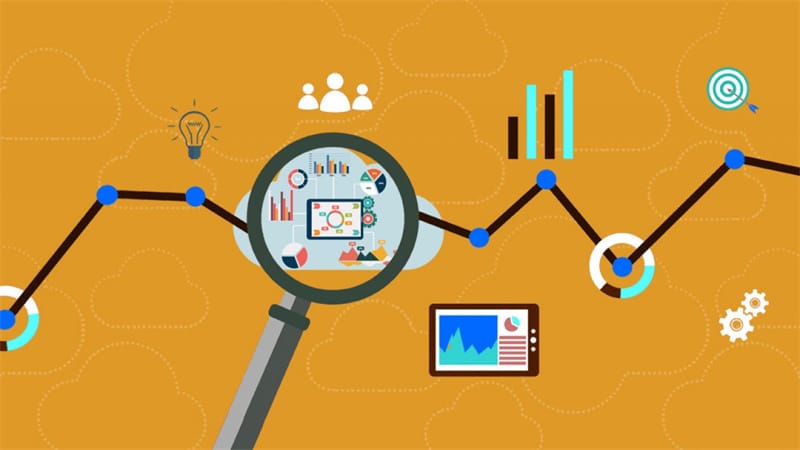
Yo, yo, Listen up y'all, I got a story to tell. About some cloud app development tools, they're really swell. You need them to make your apps soar. With the right tools, you'll never be poor. Not bad for a cloud developer/rapper, huh?
Taking the rhymes aside, what are the top tools for cloud application development? What's so special about them, and how do they speed the app development process and deployability? How are they different from the cloud statu quo?
Top 5 tools to boost your cloud application development

Cloud app development is all coding work and no fun. But it's the scale your software business needs.
If you're like me, you're always searching for tools to make your developer's job easier, more efficient, and faster. With the demand for cloud applications reaching new highs month after month, you feel the pressure to find top-notch tools and sustain that hyper-demand.
While you yearn for a good coffee break, you feel like the tools you're currently using aren't enough. Panic slowly sets in.
Don't worry. These are the five uncommon tools in cloud application development that deserve the greatest-of-all-times spot:
- Terraform
- Pulumi
- Ansible
- Kubernetes
- Heroku
What makes them so special?
If one weren't living under a rock, one would have heard about Microsoft Azure, Google Cloud Kit, Docker, and AWS Cloud9.
But what makes these five uncommon tools different from the rockstars of cloud app development? What uncommon features do they bring to the table?
Terraform
Terraform is AWS CloudFormation's closest cousin. It's an infrastructure-as-code (IaC) tool for defining, managing and deploying cloud infrastructures. In the good old days, configuring the whole cloud infrastructure through web IDE was done manually. Using Terraform's IaC, the entire thing runs in automatic mode.
It removes the soul-sucking manual work of cloud app development by turning it into quick and struggle-free automation.
That's not all: Terraform is cloud-agnostic. It’s a cloud managing superpower enabling you to manage infrastructure across different cloud providers like AWS, Azure, and GCP. It's what provides consistency and repeatability in app development.
Pulumi
Two things you'll love about the Pulumi platform:
- Rich library of pre-built cloud infrastructures.
- Managing highly complex cloud applications.
Starting with an empty code screen whenever building an application is the cloud developer's worst part of the job. That's not the case with Pulumi. The amount of time saved will be tenfold with pre-built cloud infrastructures in this platform’s library.
Hold on. That's not even the best thing about it.
Note this: Pulumi takes a 180-degree cloud management approach compared to other statu-quo development tools. Using declarative syntax is how most cloud development tools operate. That's not the case with Pulumi.
It lets you write code and manage the cloud infrastructure in your favorite coding languages like GO, Python, or JavaScript.
Ansible
Ansible is a powerful traffic cop of cloud configuration management. It lets you define your wanted cloud infrastructure state and does all the heavy lifting for you. Installing software, deploying applications, and configuring servers are done automatically.
What other cloud development tool does that?
Here's where it gets even better — Simple, human-readable syntax is Ansible's philosophy. Think of Python but for cloud development. That's why it's a perfect tool for beginner cloud developers. It's straightforward to understand and use.
Want me to sweeten the pot even more?
Ansible is a serverless platform that uses playbooks and runs without the need to install a single piece of software on your servers. Ansible's playbooks are an enormous collection of tasks written in YAML format. It's a helping hand in automating complex cloud processes most developers dream of having.
Because of those traits, the Ansible platform is a lightweight and highly scalable cloud application development tool.
Kubernetes
Fun Fact: Ever wondered why the logo is the helm? There's a deeper meaning to it. Kubernetes is a Greek word for the captain.
Just like the captain ensures the ship runs lean, the Kubernetes platform guarantees all your applications don't fall to pieces. What every developer will love about this cloud development platform is it’s open-source. With a rapidly growing community, it's constantly evolving and transforming its tools.
What sets Kubernetes apart is the declarative configuration. Essentially, it reduces the risk of human error to a bare minimum by maintaining the cloud infrastructure in a declared state. However, Kubernetes has a steep learning curve, making it not so beginner-developer-friendly.
It's not a secret — there's bigotry between Kubernetes and Docker.
Keeping it short, Kubernetes also handles container applications just like Docker, but the main difference between Kubernetes and Docker is self-healing and automatic container scheduling. If the application crashes, an automated monitoring system comes to help by restarting and healing them.
Heroku
Heroku is the go-to place to bring your cloud applications to life. Its purpose is to ease your cloud development worries with simplicity in mind and make managing complex cloud infrastructure hassle-free.
It's a Platform-as-a-Service (PaaS). It means your main job is building the cloud app. Everything else (security, networking, and management) is taken care of by Heroku. What I found interesting is the code-to-live-app period that's pushed down to minutes!
But that's not even the sexy part.
Heroku comes with an automatic scale feature. When the demands for your app increase, the platform automatically scales it without any traffic spikes or downtime periods.
3 trends in cloud application development that influence the tools you use

There are three trends on the rise to keep an eye on. They are the influencers dictating where the cloud app development is going. Following them will turn you into the OG of cloud app development tools.
They are:
- Serverless architecture
- Edge Computing
- Multi-cloud strategy
The manage-less infrastructure of serverless computing will be shifted to the edge of the network, improving performance and latency. Combining it with multi-cloud providers for building and deploying apps will be the cloud development of tomorrow. And you can start building that future right now using all the tools explained above.










